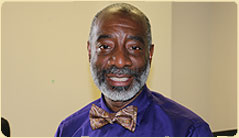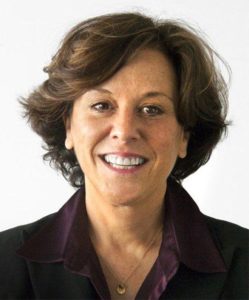With increased public awareness of the racial disparities in the criminal justice system, policing and mass incarceration, more attention is paid to a school-to-prison pipeline. This pipeline — replete with poor, underfunded schools that resemble prisons — ensnares Black children at an early age through policies of criminalization. However, what is particularly staggering is the young age at which children are targeted for punishment and discipline. Even kids in pre-K are not immune.
The Civil Rights Data Collection, a U.S. Department of Education survey of over 50 million students and 95,000 schools across the nation between 2013 and 2014, tells the story. Unveiled earlier this month, the study found that while suspensions have dropped 20 percent, suspensions vary widely based on the race of the students.
In preschool, Black children are 3.6 times more likely to face suspension than their white peers. Further, while Black children are 19 percent of students enrolled in preschool, they are 47 percent of preschool children who are suspended at least once. In contrast, white children — who are 41 percent of those enrolled in preschool — account for 28 percent of suspensions.
And the situation is serious for Black boys and girls. Black boys are 19 percent of preschool boys, but represent 45 percent of male preschool children who are suspended. Similarly, Black girls are 20 percent of female preschool enrollment, but experience 54 percent of suspensions among preschool girls.
Across all grades, Black students were four times as likely to be suspended and almost twice as likely to be expelled as whites. Students with disabilities were twice as likely to face suspension as others. Among grades K through 12, 6 percent of all students have been suspended, including 18 percent of Black boys, 10 percent of Black girls, 5 percent of white boys, and only 2 percent of white girls.
The data raise crucial questions. For example, why would there be a need for suspensions at such a young age, and what are the reasons for the racial disparities? Is implicit bias at work here? What are the consequences for children, particularly children of color and poor and at-risk kids? And what are the solutions to this problem?
“Several studies conducted over the last 40 years, such as the 1975 Children’s Defense Fund study, have revealed that Black students are suspended at disproportionate rates compared to white students. The most recent study conducted by the U.S. Department of Education reveals a very troubling trend for Black children in our education system, and I am appalled by the failure of our government to solve this problem,” Charles Bell, a sociology lecturer at Eastern Michigan University, and a Ph.D. student in sociology at Wayne State University, told Atlanta Black Star.

Charles Bell, Ph.D. candidate in Sociology, Wayne State University
Bell, who is a candidate for the Michigan House of Representatives, shared his thoughts on the role of suspension of Black children.
“The persistence of the racial disparities in school suspension and expulsion show that this practice is purposeful. I believe school suspension and expulsion are used as a tactic to systematically remove students of color from the educational environment and into settings of incarceration. This practice is referred to as the school-to-prison pipeline, and it represents one of the greatest civil rights challenges of the 21st century,” said Bell, who specializes in racial inequality. “I also believe cultural-mismatch between a student population and school personnel contributes to this problem. Nationally, students of color make up nearly 50 percent of the school-age population, but teachers of color represent less than 20 percent of the K-12 educators,” he added.
The sociologist is also concerned that children with disabilities are suspended more often than other students, which disproportionately affects children of color as well.
For Dr. Mwata Kevin Washington, President of the Association of Black Psychologists, the issue is not theoretical, but something he knows through personal experience. Dr. Washington told Atlanta Black Star that his sixth-grade daughter in Orange County, Florida — which has a high suspension rate for Black children — was given a 10-day suspension for protecting herself, responding to a bully and hitting back.
“My daughter told me that the same day a white male used an object in a P.E. class to puncture somebody,” Washington said. “The same day a white male stabbed somebody with a hard object, for seven days he could not attend the classroom. He wasn’t suspended from school — he simply could not attend the classroom,” he added.

Dr. Mwata Kevin Washington, President of the Association of Black Psychologists
Washington said part of the problem is the “racial socialization of our children…because they don’t know who they are.”
“If we have a curriculum that speaks to their inferiority and their being a necessary evil, it begins to engender resentment in the children,” Washington said, noting that his daughter was taught in her middle school that “Kemet was built by aliens,” and “slavery was a benefit to African people.” He noted that his daughter is “inoculated from the madness that other children don’t have.”
“What kind of children do you think will come out of that system?” he asked. “ ‘I don’t have value, I don’t have worth, and the best thing that could happen was enslavement, because all I was was a banjo-picking, boot-licking individual.’ That leads to internal anger,” Washington offered. “White students are learning about the inferiority of Black children: ‘You don’t have good sense, you don’t monitor your emotions, so the best thing to do is to remove you from the school,’ ” he added.
“It is clearly discrimination; there is no other way to look at it. When you look at the disproportionate number of Blacks that are sentenced, there is a direct action to identify certain populations,” he said of the racially disparate punishment, placing it within the context of the greater society. “You see a rise in racialized acts with the presidency of Barack Obama. There has been heightened activity and a great deal of anger in this country, as we have seen African-Americans being targeted for a variety of acts in the school system since desegregation has occurred,” Washington added, noting that “at this time we are noticing an upsurge, which makes it difficult for our children to receive an education.”
According to the Association of Black Psychologists chief, white teachers label Black children, including his daughter, as violent, ”conforming to the age-old narrative of the violent Negro.”
“There is narrative that’s been told that Black people are inherently violent — the genetic predisposition for violence — and that you have to watch out for the violent Negro,” Washington said. “We don’t have that narrative about Europeans, but when you look at lynchings, castration, even the British and the Irish, there are countless narratives about violent Europeans. But now, the narratives are revised, and the Blacks are violent.”
Washington also shared that at around third and fourth grade, Black children are perceived as violent in a classroom setting as their bodies begin to change.
“White boys are seen as rambunctious and exploratory. If there is a narrative of Blacks being violent and there are more [whites than Blacks] teaching, then there are more Black children being suspended because they do not understand the children they teach, and normative behaviors,” Washington argued.
Black children are labeled as “problem children” and subjected to time outs, which lead to punishments and then torture.
“It’s reckless, it’s criminal, it’s irresponsible, but it is consistent to label him as a problem child because it’s a function of his genetics, his identity. It’s easy to fall back on that. They can’t learn, they can’t function. It’s easy to say that,” Washington said.
Teachers play a crucial role in the lives of children, in this case Black children who are viewed by their teachers as violent or lacking mental prowess or intellect.
“In the elementary ages of a child’s life, the teacher has the greatest influence on the child” aside from parents and peers, Washington said. “Children spend the better part of their day in the presence of teachers. So it is important for children to be affirmed by their teachers.”
In addition, Washington spoke of the “system of oppression” impacting children and their parents, a system of institutionalization and poverty in which families find themselves.
“I think the numbers are startling and upsetting,” said Donna Cooper, Executive Director of Public Citizens for Children & Youth, an organization in the Philadelphia region that improves the lives of children through initiatives and advocacy around quality health care, child care, public education and family stability.
Cooper told Atlanta Black Star that there are a few issues at play regarding the suspensions. People in the childhood sector are concerned about the mental injuries facing children under 5, which is exacerbated in Black and Latino children.
“We hear from early childhood programs [childcare centers, nursery schools] that many children are coming in with many traumatic events in their lives. As a result, their needs are higher than others. We are seeing the results of trauma becoming very apparent. We have a need to meet the emotional and psychological needs” she said. “We also have adults that are unprepared for the experiences these children are bringing into the classroom, and not appropriately responding to these children, given the horrific violence in their communities. These are the things that children bring into the classroom. and teachers must respond,” Cooper noted.

Donna Cooper, Executive Director, PCCY
“Expulsion is not the answer. It is the canary in the coal mine,” Cooper added, arguing that a focus must be placed on providing children with support services to allow them to succeed. In light of the suffering these children are experiencing, suspensions, Cooper believes, are not addressing their needs or responding to their pain. As a result, children who may be acting out through their pain are only going to get worse.
“The teacher isn’t prepared, this childcare worker is paid minimum wage, maybe $10 an hour, and isn’t prepared to deal with a child who is a biter,” she said. “That kid has a lot of needs that teacher doesn’t necessarily have the capacity to respond. They don’t have any surplus staff, they may or may not have training, there are limited mental health services for children under 5,” Cooper said.
One issue that experts identify in the debate over childhood suspensions is the harm caused by zero-tolerance policies.
“Instead of using school suspension and expulsion as last resorts to addressing problematic behavior in the classroom, zero-tolerance policies have created an environment that readily embraces school removal. Additionally, research on childhood socio-emotional development calls for an exploration into the cause of problematic behavior when it manifests in the classroom,” said Bell.
“Students who exhibit problematic behavior in the school setting may be experiencing difficulty in their home life, victims of bullying in the school environment, or may be exhibiting symptoms associated with a behavioral and/or emotional impairments. The fact that schools are suspending Black students before they explore the factors that could contribute to problematic behavior in the academic setting goes against all of the research” he added.

Dawn X. Henderson, Ph.D.
Assistant Professor of Psychology, Winston-Salem State University
“You are punishing the child for the failure of adults,” Cooper said. “That isn’t to say we shouldn’t put children in detention if they tell teachers to screw off, but if children show signs of acting out, it is not about acting out, but the failure of adults to help them thrive.”
Meanwhile, Dr. Dawn X. Henderson — Assistant Professor of Psychology at Winston-Salem State University and a community psychologist — said that Black, Latino and Native American children of color in public schools are “invisible.” Further, she suggests they exist in a place of “madness and unhappiness” and an environment of dysfunction and disorder, as she has written on the blog of the American Psychological Association.
Henderson, who has written on interventions for suspended youth, notes that poor Black and brown children are not only disproportionately punished and branded as social deviants, but are also referred to remedial education and diagnosed with Attention Deficit Hyperactivity Disorder. Further, Henderson writes that children of color are in school systems that devalue their culture, are continuously told they are failures, and are punished for behaviors that are the result of trauma.
Henderson told Atlanta Black Star that while zero-tolerance policies were meant to address violence, they are used primarily against nonviolent behavior in children of color. She said the racial disparities in the punishment of young people began to surface around 1972.
“The catalyst that elevates it to what we’ve seen over the past 10 years is the Gun Free Schools Act, which was passed in 1996. When it was passed, the federal government tied funding to schools implementing these particular policies. So zero-tolerance came out of that. It began with zero-tolerance for drugs or violent behavior,” she said. “People began to use it as a blanket term to suspend students for nonviolence. The majority of the incidents were nonviolent — insubordination, skipping school, excessive noise, dress code violations.”
Further, police — known as school resource officers — replaced security guards in the schools.
“If the child is disruptive, the vice principal brings in the resource officer to subdue the young person, and in some instances escort that young person to the police station,” she added.
“There’s an expectation challenge that 3- and 4-year-olds have to act like 6- and 7-year-olds,” Cooper said of the preschool teachers and staff. “They say: ‘I’m telling you things so you can be ready for school.’ ”
Meanwhile, pre-K students are being suspended for behaviors associated with agitation, hyperactivity and nervous energy, such as flipping a pencil, according to Henderson. Teachers view such behavior as a sign of defiance and insubordination, she argues, when in reality it is not.
“Young people can see unfair treatment in front of their eyes,” she said, concluding that it negatively impacts their psychological well-being.
Young Black men respond to this mistreatment with externalizing behavior, by lashing out against their environment.
“They are more aggressive, more defiant, more opposition, engaging in violence. Young ladies will internalize it, they will diminish their self-esteem and self-worth. You’re talking about heightened levels of anxiety, a disconnect. You disassociate yourself from the school, and you have a higher prevalence of dropping out,” Henderson said.
Meanwhile, these children live in disempowered communities where parents feel powerless.
“When you look at the data, class intersects,” Henderson noted. “It’s kids of color, but most oftentimes you realize…when young people are coming from a fragmented community, the level of advocacy and ability to navigate the school system is diminished. Unfortunately for some young people, their parents may not necessarily have the wherewithal to advocate for their children. If you cannot advocate and do not have the necessary resources to negotiate the outcomes for your child, you can be marginalized,” Henderson suggests.
“It takes what I call the village, the community agencies — even at the university level — need to come together with community dialogue. We need to work in the school system with training with economically fragile communities, and community agencies must engage with parents to provide them with the tools to promote advocacy in their involvement in the educational pipeline,” Henderson said.
And schools cannot do it alone, as it helps to have multiple partners, specialists trained in trauma and mental health, law enforcement and others engaged with parents. In addition, Henderson said universities must diversify their teacher workforce, and the types of teachers coming into the pipeline.
“Teachers do not reflect the demographics. You do not just provide diversity training,” she said, but rather you must also challenge implicit biases and understand institutional racism. Creative solutions are necessary beyond throwing dollars at the schools, she believes, and in-school suspensions fail to address the root issue.
“If you suspend a student and put them in a 3-week retreat to help them with social skills, coping skills, we can talk about that, but that’s not what happening,” Donna Cooper of PCCY said. “The kid is not going to get well by themselves.”
Cooper noted that for children who are already exhibiting signs of distress at the age of 5, there are serious consequences regardless of whether they are expelled.
“Expulsion makes it the conversation, but the fact is we have children who have suffered horrible lives. We may expel them or we may ignore them. That is adding insult to injury. We need to meet the needs of these children, or they are not going to blossom,” she offered. “The adults need more resources and training to help these children.”
“I believe the racial disparities in school suspension and expulsion convince Black children to leave the school environment in large numbers. Many Black students drop out of school or do not perform to their ability,” Bell said. “Additionally, other Black students adopt the belief that they are being criminalized and that school is only preparing them for a life inside of prison. The solution would be to end zero-tolerance policies and review school suspensions on a case-by-case basis. Also, policymakers and administrators should use school suspension and expulsion as last resorts instead of primary measures.”


